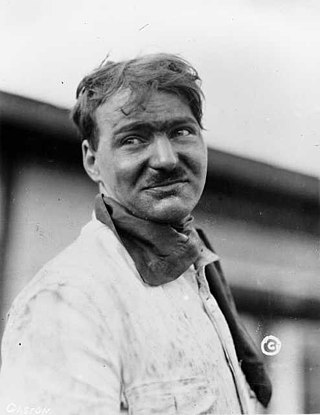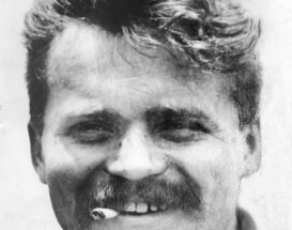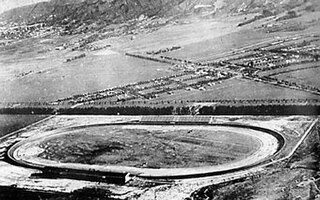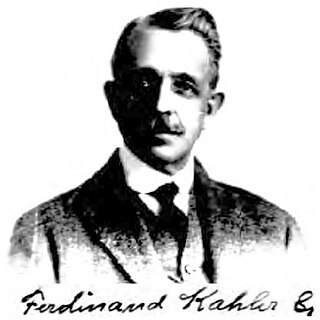
Chevrolet, colloquially referred to as Chevy, is an American automobile division of the manufacturer General Motors (GM).

Louis-Joseph Chevrolet was an American racing driver, mechanic and entrepreneur who co-founded the Chevrolet Motor Car Company in 1911.

The Indianapolis 500 auto race has used a pace car every year since 1911. The pace car is utilized for two primary purposes. At the start of the race, the pace car leads the assembled starting grid around the track for a predetermined number of unscored warm-up laps. Then if the officials deem appropriate, it releases the field at a purposeful speed to start the race. In addition, during yellow flag caution periods, the pace car enters the track and picks up the leader, bunching the field up at a reduced speed.

Gaston Louis Chevrolet was an American racing driver and automobile manufacturer. He was the winner of both the Indianapolis 500 and the American National Championship in 1920.

Arthur Chevrolet was an American racing driver and automobile manufacturer.

The Beverly Hills Speedway was a 1.25-mile (2.01 km) wooden board track for automobile racing in Beverly Hills, California. It was built in 1919 on 275 acres (1.11 km2) of land that includes the site of today's Beverly Wilshire Hotel, just outside the "Golden Triangle". The former site is bounded by Wilshire Boulevard, South Beverly Drive, Olympic Boulevard and Lasky Drive. The project was financed by a group of racers and businessmen that called itself the Beverly Hills Speedway Association. The track was the first in the United States to be designed with banked turns incorporating an engineering solution known as a spiral easement.

Samuel Jon Hornish Jr. is an American semi-retired professional auto racing driver. He last competed part-time in the NASCAR Xfinity Series, driving the No. 22 Ford Mustang for Team Penske in 2017.
This article discusses the year-by-year history of the Indianapolis 500 race.

August Samuel Duesenberg was a German-born American automobile and engine manufacturer who built American racing and racing engines that set speed records at Daytona Beach, Florida, in 1920; won the French Grand Prix in 1921; and won Indianapolis 500-mile races, as well as setting one-hour and 24-hour speed records on the Bonneville Salt Flats in Utah in 1935. He also shared with his older brother, Frederick S. "Fred" Duesenberg, patents filed in 1913 and renewed in 1918 for a four-cylinder engine design and the Duesenberg Straight 8.

The 8th International 500-Mile Sweepstakes Race was held at the Indianapolis Motor Speedway on Monday, May 31, 1920.

Robert R. Burman was an American racing driver. He was an open-wheel pioneer, setting numerous speed records in the early 1900s. He participated in many historic races and was one of the drivers to compete in the first edition of the Indianapolis 500 in 1911.

The Indianapolis Motor Speedway Museum is an automotive museum on the grounds of the Indianapolis Motor Speedway in Speedway, Indiana, United States, which houses the Indianapolis Motor Speedway Hall of Fame. It is intrinsically linked to the Indianapolis 500 and Brickyard 400, but it also includes exhibits reflecting other forms of motorsports, passenger cars, and general automotive history. In 2006, it celebrated its 50th anniversary. The museum foundation possesses several former Indianapolis 500 winning cars, and pace cars, and they are regularly rotated onto the display floor exhibits.

The Monroe was a Brass Era and vintage car built in Flint, Michigan (1914–1916), Pontiac, Michigan (1916–1918), and Indianapolis, Indiana (1918-1923).

The Wheeler-Schebler Trophy Race was an automobile race held at the Indianapolis Motor Speedway in each of the two years prior to the first Indianapolis 500. The trophy was sponsored by the Wheeler-Schebler Carburetor Company. Frank Wheeler, one of the four co-founders of the Speedway, was also the president and co-founder of Wheeler-Schebler. The 1909 race was originally scheduled for 300 miles, but was ended at 235 miles due to deteriorating track conditions.
The 1920 Grand Prix season saw further activity in motor-racing gradually increase. Europe was still recovering from the end of the war and the terrible pandemic that swept the continent. Automotive companies were gradually re-establishing themselves after re-tooling from a wartime footing and getting production lines rolling again.
The AAA Contest Board was the motorsports arm of the American Automobile Association. The contest board sanctioned automobile races from 1904 until 1955, establishing American Championship car racing. Modern-day Indy car racing traces its roots directly to these AAA events.
Frederick Earl "Skinny" Clemons was an American race car designer and racing driver. He was one of the first entrants at the Indianapolis 500. He designed and built his own cars, engines and created his own Independent wheel suspension which he patented in 1934. An identification letter 'C’ or ‘Cm ' often appears in front of the race Numbers on Clemons' cars. Lou Meyer, Joe Russo, Wilber Shaw and many other race drivers drove his cars.

Ferdinand Nickolas Kahler Sr. was an American inventor, entrepreneur and automobile pioneer who founded The Kahler Co. in New Albany, Indiana.
















